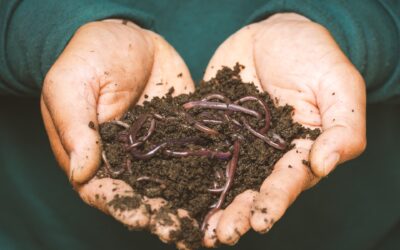No. 43: Use mulch in landscaping to retain moisture and reduce water usage
No. 43: Use mulch in landscaping to retain moisture and reduce water usage
Number 43
Mulching is an eco-friendly and cost-effective way of reducing water usage and retaining moisture in the soil in landscaping at schools. It promotes healthy plant growth and reduces water runoff, ultimately saving water and money.
Learn why you should do this:
Landscaping is an essential part of school maintenance, providing a visually appealing environment for students, staff, and visitors. However, traditional landscaping methods can consume vast amounts of water, leading to increased water bills and environmental impact. One way to combat this is by incorporating mulch into your school’s landscaping.
Mulch is an organic material that can be applied to the surface of soil to retain moisture, suppress weed growth, and regulate soil temperature. When used in landscaping, mulch can reduce water consumption by up to 50% by retaining soil moisture and reducing the amount of water that evaporates from the soil surface.
Using mulch in landscaping provides numerous environmental benefits. The use of mulch can reduce water consumption, decrease runoff, and conserve soil moisture. Additionally, mulch reduces the need for chemical herbicides, which can harm the environment and contribute to water pollution.
In addition to the environmental benefits, incorporating mulch into your school’s landscaping can also have financial benefits. The use of mulch can reduce water bills, decrease the cost of weed control, and prolong the life of plants and trees by providing necessary nutrients and moisture to the soil.
According to the Environmental Protection Agency (EPA), using mulch in landscaping can save schools up to 30% in water usage. Additionally, studies have shown that the use of mulch can increase plant growth and yield by up to 35%.
To maximize the benefits of mulch in landscaping, it is essential to choose the right type of mulch for your school’s specific needs. Organic mulch, such as wood chips or bark, is an excellent choice for retaining moisture and suppressing weed growth. Inorganic mulch, such as rocks or gravel, is more durable and longer-lasting but does not provide the same moisture retention benefits as organic mulch.
It is also important to apply mulch correctly to ensure maximum effectiveness. Mulch should be applied in a layer of 2-3 inches and should not be placed directly against the stems or trunks of plants or trees, as this can cause rot and other issues.
By incorporating mulch into your school’s landscaping, you can create an attractive and sustainable environment for students and staff while saving money and reducing environmental impact. By choosing the right type of mulch and applying it correctly, you can maximize the benefits of this simple yet effective landscaping tool.
In conclusion, using mulch in landscaping is an effective and environmentally-friendly way to conserve water, reduce runoff, and prolong plant and tree life. With numerous financial and environmental benefits, incorporating mulch into your school’s landscaping should be a priority for any school looking to improve its sustainability and reduce its impact on the environment.
Sources:
- Environmental Protection Agency. (n.d.). Mulching. Retrieved from https://www.epa.gov/soil-fertilizer-and-compost/mulching
- The Morton Arboretum. (n.d.). Mulching trees and shrubs. Retrieved from https://www.mortonarb.org/trees-plants/tree-and-plant-advice/horticulture-care/mulching-trees-and-shrubs
- University of Minnesota Extension. (n.d.). Mulching landscape plants. Retrieved from https://extension.umn.edu/planting-and-growing-guides/mulching-landscape-plants

All 100 ideas in one, easy to share ebook. Download now and start helping your school be its best version of itself...
Downloaded over 17,000 times!

More ways to make a difference, now!
No. 48: Reduce paper use by going digital with assignments & communications
Number 48 Going digital with assignments and communications can significantly reduce paper usage in schools, leading to environmental benefits such as decreased deforestation and greenhouse gas emissions. It can also result in financial savings from reduced paper and...
No. 39: Use energy-efficient kitchen equipment for school cooking
Number 39 Switching to energy-efficient kitchen equipment in schools can lead to significant environmental and financial benefits. Not only can it reduce carbon emissions and energy bills, but it can also improve the health and well-being of students and staff. Learn...
No. 51: Use natural fertilizers and compost in the school grounds
Number 51 Using natural fertilizers and compost in school grounds instead of chemical fertilizers brings many environmental and financial benefits. It helps reduce soil contamination, decrease waste disposal costs, and improve soil fertility, among others. Learn why...





